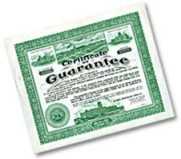|
From 1908Ė1940, Sears, Roebuck and Co. sold about 70,000 - 75,000 homes through their mail-order Modern Homes program. Over that time Sears designed 447
different housing styles, from the elaborate multistory Ivanhoe, with its
elegant French doors and art glass windows, to the simpler Goldenrod, which
served as a quaint, three-room and no-bath cottage for summer vacationers. (An
outhouse could be purchased separately for Goldenrod and similar cottage
dwellers.) Customers could choose a house to suit their individual tastes and
budgets.
Sears was not an innovative home designer. Sears was instead a very able
follower of popular home designs but with the added advantage of modifying
houses and hardware according to buyer tastes. Individuals could even design
their own homes and submit the blueprints to Sears, which would then ship off
the appropriate precut and fitted materials, putting the home owner in full
creative control. Modern Home customers had the freedom to build their own dream
houses, and Sears helped realize these dreams through quality custom design and
favorable financing.
Designing a Sears Home
The process of designing your Sears house began as soon as the Modern Homes
catalog arrived at your doorstep. Over time, Modern Homes catalogs came to
advertise three lines of homes, aimed for customersí differing financial
means: Honor Bilt, Standard Built, and Simplex Sectional.
Honor Bilt homes were the most expensive and finest quality sold by Sears.
Joists, studs, and rafters were to be spaced 14 3/8 inches apart. Attractive
cypress siding and cedar shingles adorned most Honor Bilt exteriors. And,
depending on the room, interiors featured clear-grade (i.e., knot-free) flooring
and inside trim made from yellow pine, oak, or maple wood. Searsís catalogs
also reported that Standard Built homes were best for warmer climates, meaning
they did not retain heat very well. The Simplex Sectional line, as the name
implies, contained simple designs. Simplex houses were frequently only a couple
of rooms and were ideal for summer cottages.
While browsing the Imagebank, you may see many houses that partially or even
closely resemble a house that you own or have seen. Look closely, because the
floor plan may be reversed, a dormer may have been added, or the original buyer
may have chosen brick instead of wood siding. Plumbing may look like it was
added after construction, or storm windows may appear on the house but not in
the catalogís illustration.
All of this and more are possible, because the Modern Homes program encouraged
custom designing houses down to the color of the cabinetry hardware. The
difficulty in identifying a Sears home is just a reflection of the unique design
and tastes of the original buyer (see FAQs).
Construction
As mentioned above, Sears was not an innovator in home design or construction
techniques; however, Modern Home designs did offer distinct advantages over
other construction methods. The ability to mass-produce the materials used in
Sears homes lessened manufacturing costs, which lowered purchase costs for
customers. Not only did precut and fitted materials shrink construction time up
to 40% but Searsís use of "balloon style" framing, drywall, and
asphalt shingles greatly eased construction for homebuyers.
"Balloon style" framing. These framing systems did not require
a team of skilled carpenters, as previous methods did. Balloon frames were built
faster and generally only required one carpenter. This system uses precut timber
of mostly standard 2_4s and 2_8s for framing. Precut timber, fitted pieces, and
the convenience of having everything, including the nails, shipped by railroad
directly to the customer added greatly to the popularity of this framing style.
Drywall. Before drywall, plaster and lathe wall-building techniques were
used, which again required skilled carpenters. Sears homes took advantage of the
new homebuilding material of drywall by shipping large quantities of this
inexpensively manufactured product with the rest of the housing materials.
Drywall offered advantages of low price, ease of installation, and was added
fire-safety protection. It was also a good fit for the square design of Sears
homes.
Asphalt shingles. It was during the Modern Homes program that large
quantities of asphalt shingles became available. The alternative roofing
materials available included, among others, tin and wood. Tin was noisy during
storms, looked unattractive, and required a skilled roofer, while wood was
highly flammable. Asphalt shingles, however, were cheap to manufacture and ship,
as well as easy and inexpensive to install. Asphalt had the added incentive of
being fireproof.
Modern Conveniences
Sears helped popularize the latest technology available to modern homebuyers
in the early part of the twentieth century. Central heating, indoor plumbing,
and electricity were all new developments in home design that Modern Homes
incorporated, although not all of the homes were designed with these
conveniences. Central heating not only improved the livability of homes with
little insulation but it also improved fire safety, always a worry in an era
where open flames threatened houses and whole cities, in the case of the Chicago
Fire. Indoor plumbing and homes wired for electricity were the first steps to
modern kitchens and bathrooms. Sears Modern Homes program stayed abreast of any
technology that could ease the lives of its homebuyers and gave them the option
to design their homes with modern convenience in mind.
|


